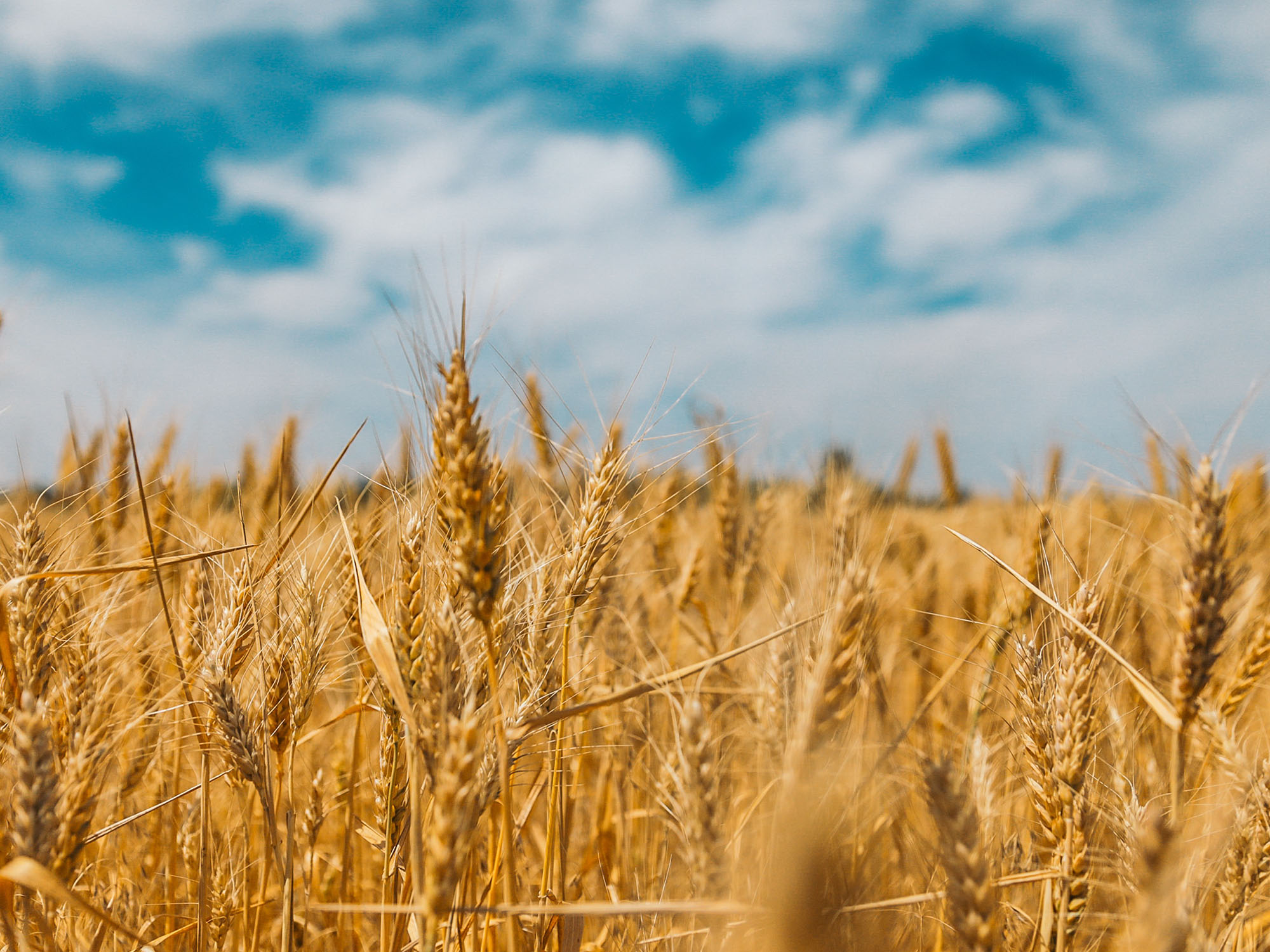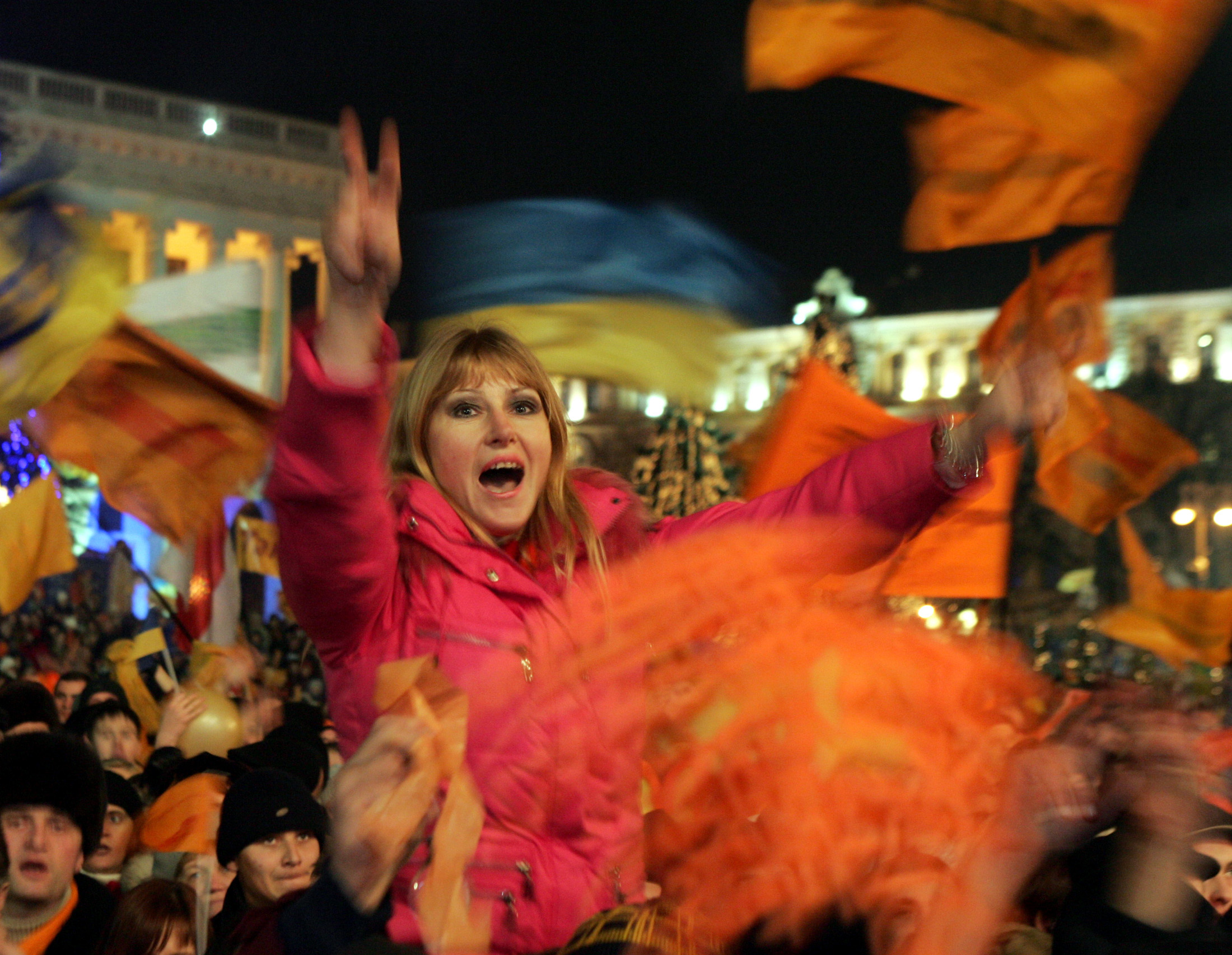This month marks the twentieth anniversary of Ukraine’s Orange Revolution. When protests over a rigged presidential election first erupted in downtown Kyiv on November 22, 2004, few observers could have imagined that they were witnessing the opening act in a geopolitical drama that would eventually lead to the largest European conflict since World War II. And yet there can be little doubt that Russian President Vladimir Putin’s desire to crush Ukraine first began to take shape two decades ago as he watched the Ukrainian people defy their own authoritarian rulers and demand a democratic future.
For the past twenty years, there has been a tendency to view the Orange Revolution primarily as a political failure. This assessment is easy enough to understand. After all, while the revolution overturned a fraudulent presidential vote and brought reformist candidate Viktor Yushchenko to power, it did not lead to the kind of political transformation that the millions of Ukrainians who participated in the protest movement hoped for. Instead, Yushchenko spent much of his presidency squabbling with colleagues and compromising with opponents, before eventually losing the 2010 election to Orange Revolution villain Viktor Yanukovych.
While the revolution clearly fell short of its lofty political goals, focusing exclusively on domestic Ukrainian politics is short-sighted. In order to appreciate the true historic significance of the Orange Revolution, it must viewed in a far broader context.
Prior to the revolution, post-Soviet Russia had substantial influence in Ukraine, with Vladimir Putin topping polls as the most popular politician among Ukrainians. At the same time, the two countries were already quite distinct. The centralized power vertical in Russia created the conditions for hard authoritarianism. In contrast, the need to balance competing centers of influence and power in Ukraine gave rise to a softer authoritarianism.
Putin’s heavy-handed promotion of Viktor Yanukovych ahead of the 2004 presidential election, and his subsequent push for a crackdown on protesters during the Orange Revolution, highlighted the growing differences between the two nations. This hastened Ukraine’s trajectory away from Russia, a pattern that continues to this day.
Putin played a very prominent personal role in the Orange Revolution. Russian television, which was at the time widely watched in Ukraine, relentlessly pushed the candidacy of Viktor Yanukovych during the buildup to Ukraine’s presidential election. On the eve of the vote, Putin made the fateful decision to intervene directly. He traveled to Kyiv in late October 2004, where he was greeted with an impromptu military parade before appearing on national TV to lecture the Ukrainian public at length on the importance of backing his preferred presidential pick.
It soon became clear that Putin had miscalculated disastrously. His open and unapologetic attempt to interfere in Ukraine’s internal affairs was widely interpreted as a grave insult and an indication of his contempt for Ukrainian statehood. This electrified public opinion and helped mobilize millions of previously apolitical Ukrainians.
Weeks later, after a deeply flawed second round of voting, Ukrainians would respond to the attempted theft of their election by flooding into central Kyiv in huge numbers. It is no exaggeration to say that Putin’s act of supreme imperial hubris was one of the key causes of the Orange Revolution.
This pattern has repeated itself throughout the past twenty years, with Putin’s efforts to impose his will on Ukraine consistently backfiring and pushing the two countries further apart. In 2013, he pressured his Ukrainian ally Yanukovych to abandon European integration and return the country to the Kremlin orbit, only for this to provoke a second revolution and the fall of the Yanukoych regime.
Putin then opted for a military solution. He began the invasion of Ukraine in February 2014 with the seizure of Crimea, before sending forces into eastern Ukraine’s Donbas region weeks later. When it became obvious that this limited military intervention had merely succeeded in strengthening Ukraine’s resolve to exit the Russian sphere of influence entirely, Putin began plotting what would become the full-scale invasion of February 2022.
Eurasia Center events

Since the Orange Revolution, Putin’s quest to reconquer Ukraine has come to define his entire reign. In his single-minded pursuit of this goal, he has demonstrated a willingness to incur huge costs. In addition to the lives of the countless Russian soldiers killed or maimed while fighting in Ukraine, Putin has also sacrificed Russia’s economic prosperity, the country’s international standing, and its ties to the developed world.
The historic shift in Putin’s worldview was already evident soon after the Orange Revolution. Within a few months of Ukraine’s people power uprising, he ordered work to begin on the development of what would become the Kremlin’s flagship RT English-language media platform. This was the first step in a process that has established the Putin regime as the undisputed global leader in the dissemination of anti-Western disinformation.
In spring 2005, the Kremlin also backed a nationwide campaign encouraging Russians to display orange-and-black St. George’s ribbons in honor of the Soviet victory over Nazi Germany. With images of rebellious Ukrainians sporting orange ribbons still fresh in everyone’s minds, the loyalist symbolism of this counter-gesture was hard to miss. St. George’s ribbons have gone on to establish themselves at the heart of a fanatical victory cult as the Putin regime has sought to justify its own authoritarianism via ever more extravagant forms of WWII reverence. What began life as a reaction to the orange ribbons of Ukraine’s revolution has become the ultimate symbol of the entire Putin era.
Why is Putin so obsessed with Ukraine, and what was it about the country’s Orange Revolution that triggered him so irreversibly? The answers to these questions lie in Putin’s imperialistic understanding of Russian identity and his formative political experiences as a KGB officer in Eastern Europe during the collapse of the Soviet Empire.
Putin was in East Germany in 1989 when the Berlin Wall fell. He watched helplessly as the entire Soviet presence throughout the region crumbled amid a surge in pro-democracy protests. In his own account of this traumatic time, Putin claims that his stunned superiors informed him, “Moscow is silent.” This experience has haunted Putin and left him convinced that Moscow must never be “silent” again, especially when confronted by mass protest movements or attempts to shake off Kremlin control.
Putin is particularly sensitive to modern Ukraine’s national awakening and its embrace of European democracy because he views the country as part of Russia’s imperial heartlands. If a democratic political culture can take root in a place as central to Russia’s national identity as Ukraine, this could prove contagious and serve as a catalyst for similar demands within Russia itself.
Tellingly, Putin first began to indicate his opposition to Ukrainian independence soon after the Orange Revolution. In April 2005, he had recent events in Ukraine very much in mind when he branded the fall of the USSR “the greatest political catastrophe of the twentieth century.” This is apparent from some of the lesser quoted segments of his speech, which also referenced an “epidemic of disintegration” and bemoaned the fate of the “tens of millions of countrymen” who found themselves beyond the borders of Russia in 1991. At the time, Ukraine was home to by far the largest population of ethnic Russians in the former Soviet Union.
Little has changed during the intervening twenty years. Today’s ongoing Russian invasion is a direct result of Putin’s firm conviction that the loss of Ukraine would pose an existential threat to Russia itself. It is therefore delusional to suggest that some kind of limited territorial settlement could end the current war and lead to a sustainable peace. Any attempt to offer concessions will only result in a temporary pause in hostilities before Putin resumes his campaign to extinguish Ukrainian statehood.
Vladimir Putin’s efforts to reassert Russian control over Ukraine date back to the 2004 Orange Revolution and have now escalated from political interference to the bloodiest European war for generations. He sees the destruction of the Ukrainian state as his historic mission and believes the fate of Russia hinges on his success. In such circumstances, talk of compromising with the Kremlin is futile. Instead, peace will only be possible if Putin can be convinced that Ukrainian independence is irreversible.
Peter Dickinson is editor of the ’s UkraineAlert service.
The views expressed in UkraineAlert are solely those of the authors and do not necessarily reflect the views of the , its staff, or its supporters.

The Eurasia Center’s mission is to enhance transatlantic cooperation in promoting stability, democratic values and prosperity in Eurasia, from Eastern Europe and Turkey in the West to the Caucasus, Russia and Central Asia in the East.
Image: The 2004 Orange Revolution. Kyiv, Ukraine. REUTERS/Vasily Fedosenko GD/DL








